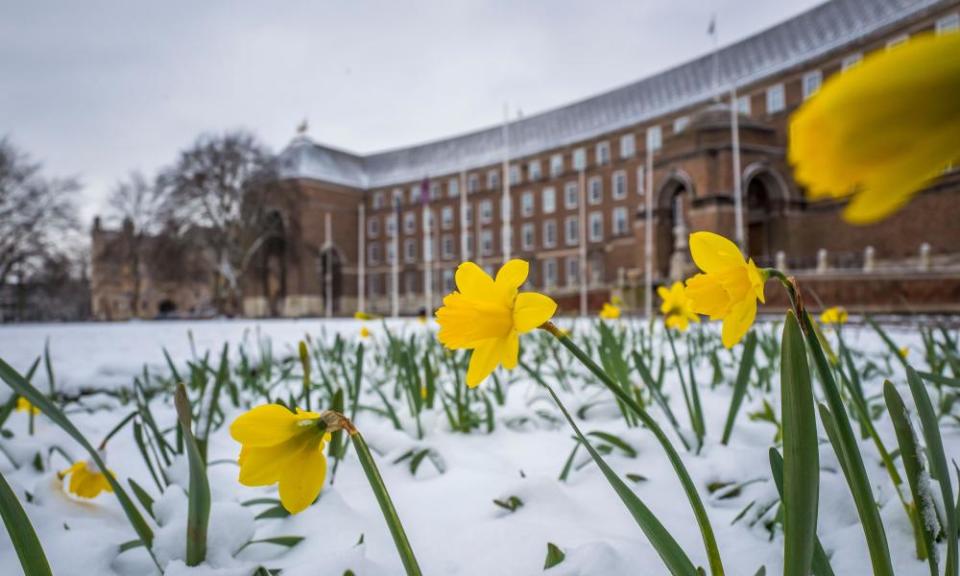Spring equinox 2018: it's official, winter is over – despite the snow

With patches of snow still covering the ground in parts of Britain, it may not seem like the first day of spring. But as of 4.15am Tuesday morning, winter was officially over for another year.
The spring, or vernal, equinox marks the point in space and time when the sun moves across the celestial equator, an imaginary circle projected into the sky above the real equator.
In the northern hemisphere, the sun moves south to north in the spring equinox, and days grow longer and nights shorter. For those in the southern hemisphere, the same equinox marks the arrival of autumn and longer nights.
Seasons on Earth are driven by the planet’s orbit and 23.5 degree tilt from the vertical axis. As the Earth circles the sun, it can show more of its northern or southern poles to the sun. But when the Earth passes through an equinox, both poles receive equal sunlight, because the planet is tilted neither towards or away from the sun.
While the equinox signals a time when day and night are equal, the moment when both share 12 hours apiece happens days earlier, because of atmospheric effects.
“The Earth’s atmosphere delays the sunset and makes the sunrise earlier,” said Robert Massey at the Royal Astronomical Society. “When the sun is on the horizon, light is bent round because we have a thick atmosphere, and that appears to raise the sun in the sky. So when the sun appears on the horizon, it would actually have set if we had no atmosphere.”
The date of the spring equinox varies from 19 to 21 March depending on location and corrections due to the mismatch between the Gregorian calendar, which logs 365 days a year, and the duration of Earth’s orbit around the sun, which takes 365.25 days to complete.

 Yahoo News
Yahoo News 